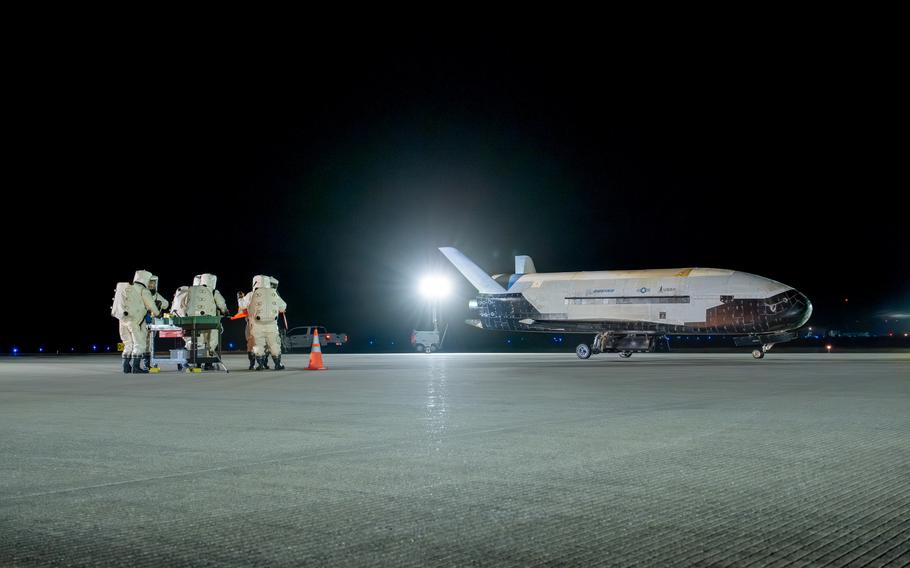
The U.S. Space Force’s X-37B Orbital Test Vehicle Mission Seven successfully landed at Vandenberg Space Force Base, Calif., March 7, 2025. (Veloz Alexander/U.S. Space Force)
The U.S. Space Force’s secretive X-37B Orbital Test Vehicle-7, an unmanned spaceplane, completed its seventh successful mission early Friday morning when it landed at Vandenberg Space Force Base in California, a service press release said.
The spacecraft is flown into space with a launch vehicle, in this mission’s case a SpaceX Falcon Heavy Rocket, then autonomously re-enters the Earth. The vehicle can then be refurbished and re-used for later missions. Only two of the vehicles exist, according to Boeing, the manufacturer.
The mission exercised the USSF’s ability to quickly launch and recover systems across multiple sites, as well as the X-37B’s space domain awareness and ability to maneuver, the release said. The seventh mission saw the unmanned craft remain on orbit for over 434 days. Previous missions have lasted over two years.
The test’s experiments of the aircraft’s space domain awareness is of import because space is an increasingly contested environment, the release noted.
As for maneuvering, the spacecraft broke new ground by demonstrating a novel aerobraking procedure. The first-of-its-kind maneuver, which was attempted in October of last year, uses the drag of the Earth’s atmosphere to change orbits — a measure that saves fuel. The X-37B aerobraked to a Low Earth Orbit after completing its tests, then de-orbited and landed at 2:22 a.m. EST.
The X-37B was a largely secret program until 2019, when it returned from its fifth mission to widespread news coverage and social media chatter. More public acknowledgment of the vehicle and its missions have been made since then, though specifics remain rare. One mission in 2020 involved experiments on how space radiation affected the viability of seeds.